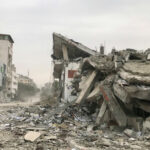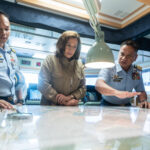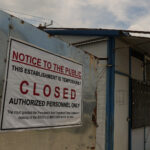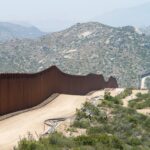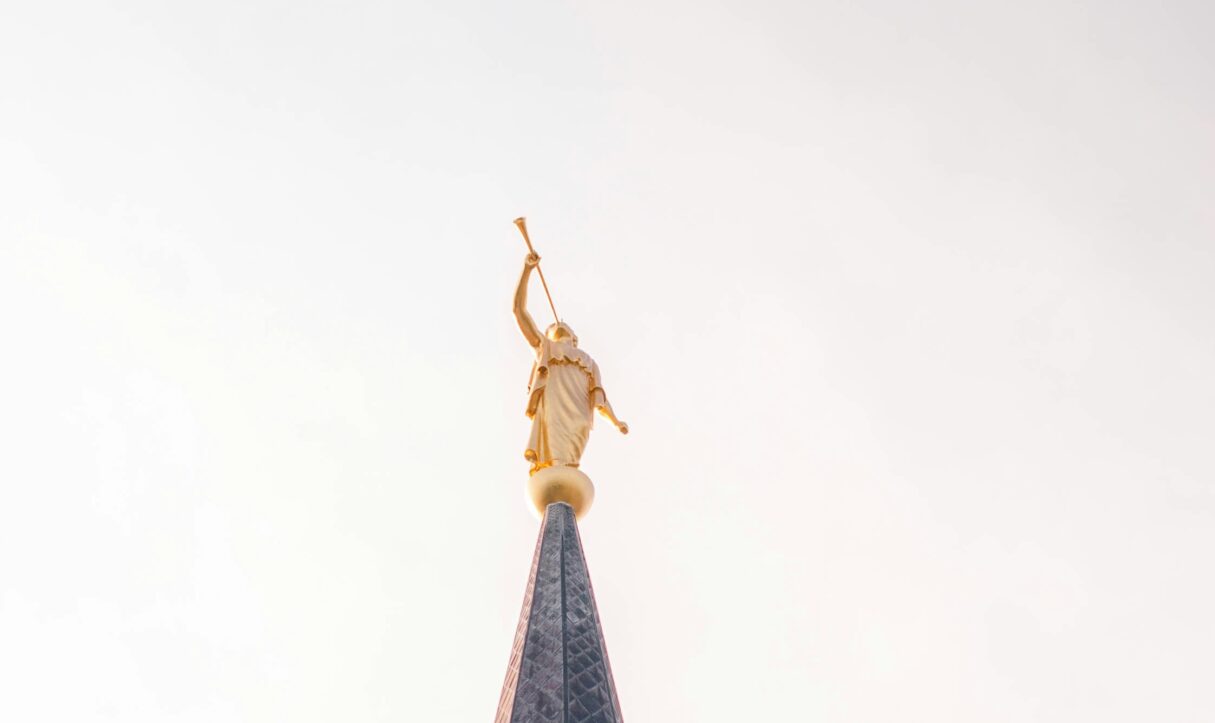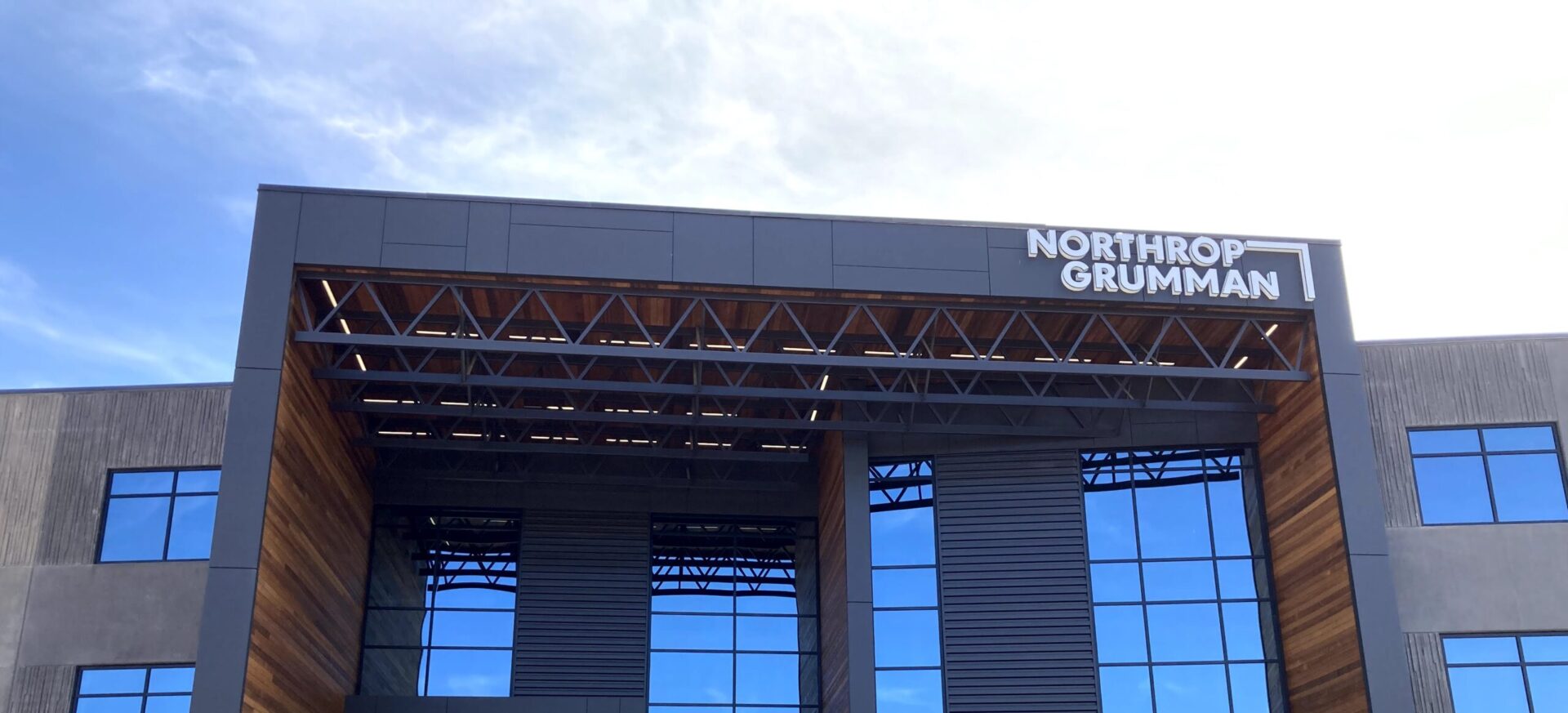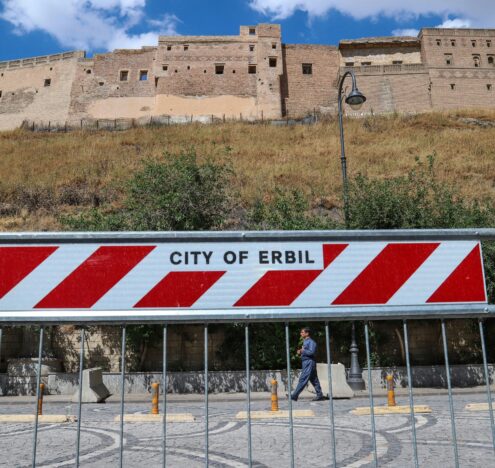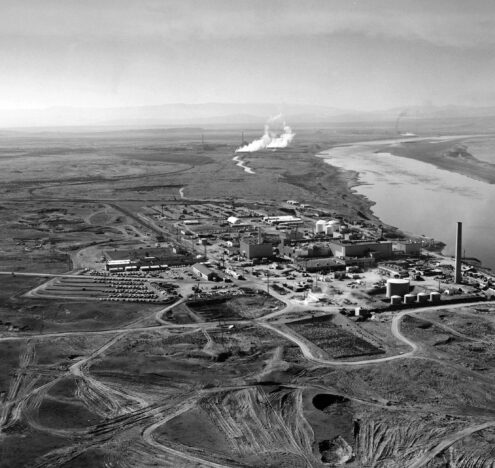On March 28, 1979, a handful of Air Force officers and a Mormon civilian employee from Utah’s Hill Air Force Base arrived in Salt Lake City for an unusual meeting. They were seeking a blessing: For the Church of Latter-day Saints’ top three leaders to endorse a plan to construct 8,500 miles of roads and 4,600 concrete garages for a nuclear weapons system. It would constantly shuttle 200 missiles on racetracks, playing a “shell game” intended to keep the Soviet military guessing where America’s nuclear warheads really were at any given moment. The Soviets could, of course, just build more nuclear weapons and take out the entire missile field at once, so American war planners imagined the project, called “Missile, Experimental,” or MX, would continuously grow, becoming 8,250 garages and 360 missiles by 1990. And so on.
That sort of arms race meant the Air Force needed Americans willing to host the ever-growing missile field. The desert landscape of the Great Basin spanning western Utah and central Nevada appealed to them. It had few highways, little infrastructure, and relatively sparse numbers of human residents. Of the population that did exist in the basing area, however, 80% was Mormon, according to an account of the MX battle in “The Mormon Military Experience,” a book recently published by historians Sherman L. Fleek and Robert C. Freeman from West Point and Brigham Young University.
The generals left the meeting with the church’s then-president, Spencer Kimball, and his two top counselors feeling “elated,” according to an academic who interviewed one of the officers. They would later be blindsided by the church’s opposition, apparently unaware on that March day that Kimball, who had visited Hiroshima for missionary work, was already entertaining dissent.
Kimball had, three years prior to the meeting, published a jeremiad about the state of the nation and the Cold War arms race. His essay, “The False Gods We Worship,” was, somewhat awkwardly due to its critical take, featured in an edition of the church’s official magazine dedicated to patriotism and America’s bicentennial. “When enemies rise up,” Kimball wrote, “we commit vast resources to the fabrication of gods of stone and steel — ships, planes, missiles, fortifications — and depend on them for protection and deliverance.”
Church leadership quietly debated the MX proposal for the next two years. According to an account by historian Jacob W. Olmstead, they were lobbied by a charismatic law professor who descended from Brigham Young and who convinced them that the Soviets would see the basing area, and the 2.1 million Mormons living in it, as a prime target for a nuclear strike. Other local opponents formed a noisy and colorful anti-MX coalition that drew together a cattle ranchers’ trade association, Indigenous residents who made up much of the remaining 20% of that basing area, state legislators, homebuilders, and hippies.
Two years after meeting the generals, the church’s governing First Presidency and Quorum of the Twelve Apostles gathered to hold a special fast to pray on the issue. The result, within less than a month, was a remarkable anti-war maneuver in which the church disavowed both the missile program and the supposed local economic boom that would come with it.
“We may predict that with so many billions of dollars at stake we will hear much talk designed to minimize the problems that might be expected and to maximize the economic benefits that might accrue,” Kimball and two counselors wrote in a statement wired directly to then-President Ronald Reagan’s administration. But Mormons came to Utah in order to “establish a base from which to carry the gospel of peace to the peoples of the earth,” they wrote. “It is ironic, and a denial of the very essence of that gospel, that in this same general area there should be constructed a mammoth weapons system potentially capable of destroying much of civilization.”
The following year, the government scrapped the shell game proposal and greatly scaled down the MX. (In addition to the church, Reagan’s own Pentagon had soured on the missile project.)
The church then went quiet on nuclear weapons, taking no more institutional positions like it did in 1981. The next glimpse into its stance came four decades later, this time in the form of legally required financial disclosures the church released amid outcry over its finances. In 2019, a whistleblower had alleged that the church had been misleading its tithe-payers for decades, resulting in an embarrassing settlement with the Securities and Exchange Commission (SEC). As church-watchers began delving into its stockholdings, they would find the ticker symbol for the world’s largest nuclear weapons contractor. In the meantime, that contractor, Northrop Grumman, was flush with billions in new Air Force contracts and revving up its rocket plants in Utah, building the 21st century’s successor to the MX.
“Deviation”
Ensign Peak Advisors, which manages a reported $100 billion in assets for the Church of Jesus Christ of Latter-day Saints, is a rare self-identified faith-based investor in Northrop Grumman.
Inkstick Media analyzed market research conducted on behalf of the International Campaign to Abolish Nuclear Weapons (ICAN) that identified more than 1,300 investment managers with financing or investing relationships with Northrop Grumman that have publicly available financial records appearing on the specialized financial database Refinitiv.
Using a data scraping and parsing tool, Inkstick systematically queried the list to find investors that publicly identified themselves as affiliated with a faith group, given that many Christian denominations have long excluded investments in nuclear weapons as part of so-called “sin screens.” Ensign Peak was among seven identified in the results. (See chart.)

Neither Ensign Peak nor a spokesperson for the LDS Church responded to Inkstick’s repeated requests for comment by email and phone about its investments in Northrop Grumman and other major nuclear weapons contractors. Spokespeople for five of the six other faith-based investors also did not provide comment to Inkstick.
(The public stock and bond data used in ICAN’s research are extensive but not comprehensive; however, entities that manage investments on the scale of the Mormon Church are required to file public disclosures of their securities, such as stocks, with the SEC, which mandates that all investment managers with more than $100 million in assets do so. Bondholding depends largely on self-reporting, and some investment managers may not do so. Faith-based investors could theoretically be making other types of investments, like in real estate or via private equity, that benefit defense contractors and that would not be covered in the Refinitiv database.)
The investments by Ensign Peak are disturbing to some in Utah’s peace community. “I think most tithe-payers would be really concerned about their money being invested in defense firms that are building weapons of mass destruction,” former Salt Lake City Mayor Rocky Anderson told Inkstick. “They think their money is going toward helping people and humanitarian causes.”
They think their money is going toward helping people and humanitarian causes.
– Rocky Anderson
Anderson is a veteran of Utah’s anti-war movement, dating back to his days as a young law school graduate campaigning for an anti-MX candidate for Senate. He’s also a lapsed Mormon who, as a child, went door to door with envelopes to collect “fast offerings” from fellow church members — that’s when, in addition to regular tithing, members forgo food for a day and contribute the amount saved on groceries to the church. Anderson said members pay tithes and those additional offerings because doing so is required to remain in good standing and take part in temple ceremonies, like marriages.
Ensign Peak only began publicly disclosing its stockholdings in 2020, less than three months after the whistleblower, the twin brother of a portfolio supervisor who became alarmed that the church was amassing billions without accountability to its members, filed a complaint to the Internal Revenue Service. The complaint accused Ensign Peak of abusing its tax-exempt status, meant for charitable organizations, and hiding its wealth lest members decide to cut back on tithing. Last year, Ensign Peak and the church agreed to pay $5 million in fines to the Securities and Exchange Commission to settle charges that it had used 13 shell companies that SEC said “obscured the church’s portfolio” and that the investment managers had not filed proper public disclosures of their equity investments through a form known as 13-F. In response to the settlement, the church said it “regret[s] mistakes made.” Those forms are the basis of Inkstick’s analysis of Ensign Peak’s nuclear weapons investments. (See chart.)
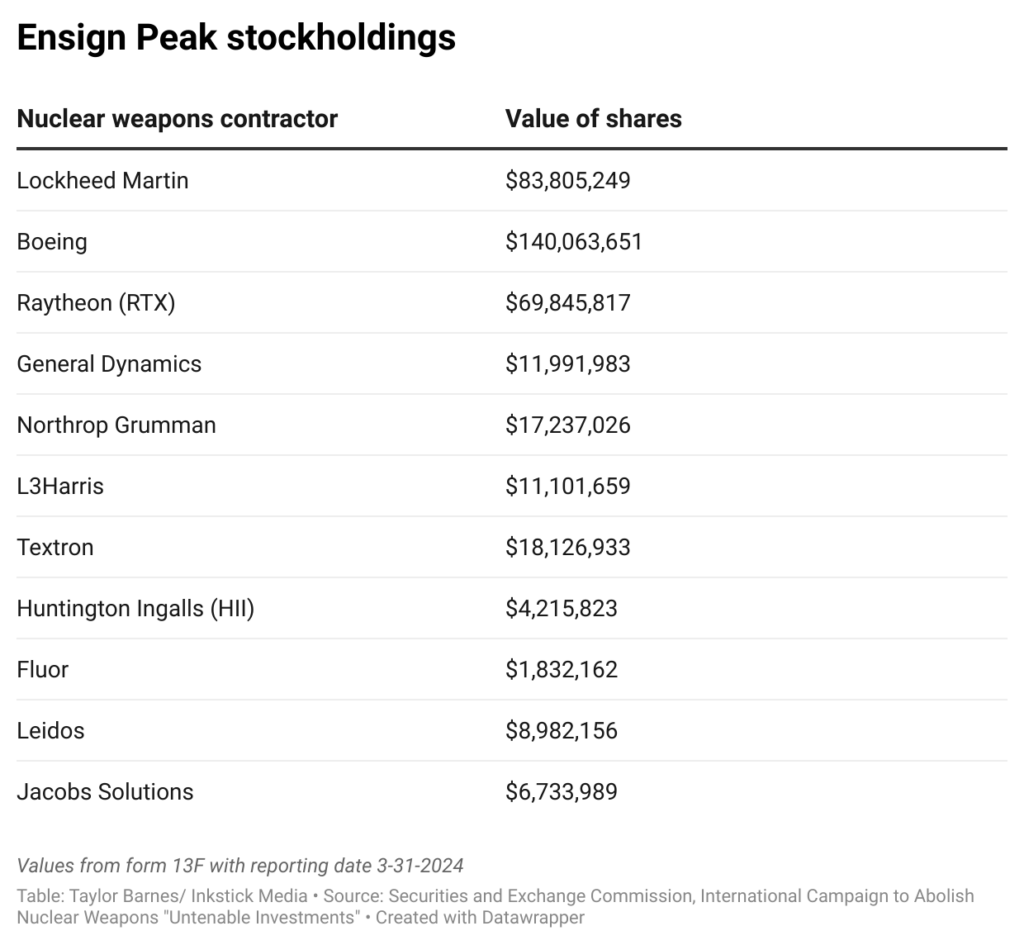
American Christian institutions have been applying so-called “sin screens” to their financial portfolios since at least the 17th century, when Quakers disavowed investments in slavery. Many Christian churches in the United States nowadays exclude a host of products and services from their investment portfolios, from pornography to private prisons to fossil fuels to drugs used in abortions or medically assisted suicides. The LDS Church has publicly stated that it employs a screen for areas its members find objectionable — including alcohol, tobacco, coffee, and gambling.
Susi Snyder, a program coordinator at ICAN’s “Don’t Bank on the Bomb” campaign, which lobbies investors to divest from nuclear weapons-producing companies like Northrop Grumman, told Inkstick that the Mormon Church’s lack of a public statement on its nuclear weapons policy is “very far behind the curve” compared to other Christian denominations. “This is a deviation from mainline Christian norms,” Snyder said.
Both the Vatican and the US Conference of Catholic Bishops (USCCB), for example, recently took unequivocal positions against investments in nuclear weapons, with new guidelines published in 2022 and 2021.
“The Catholics have come around on this,” Snyder said, “and that’s a big change.”
Doing so brought them in line with the investment managers for some of the biggest names in Western Christianity, such as the Methodist Church, the Lutheran Church, the United Church of Christ, the Church of England, Mennonites, and the Presbyterian Church. Many go well beyond nuclear weapons — the Presbyterian church’s sin screen has banned all defense contractors since 1982, and others screen out all producers of indiscriminate weapons, a category that also includes landmines and cluster munitions.



